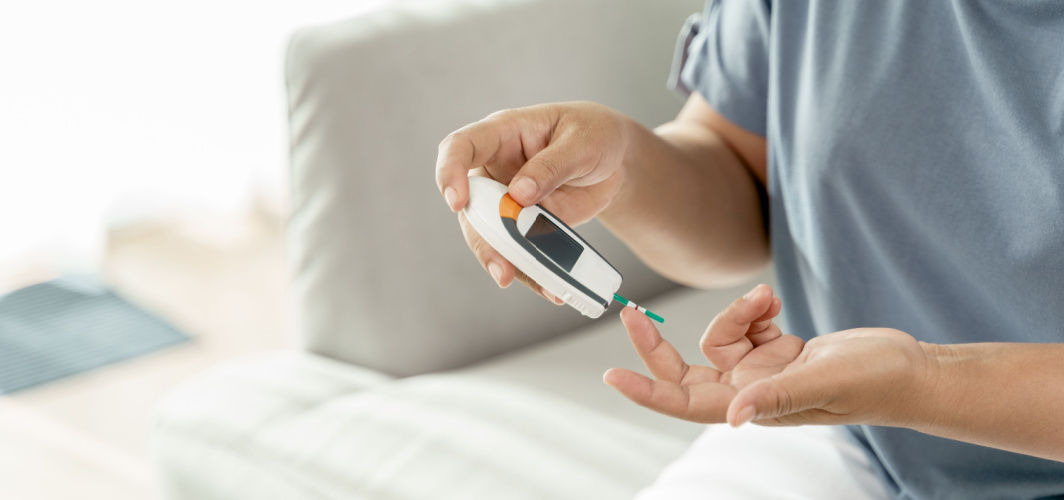Diabetes Management
How to Control Your Blood Sugar This Navratri
3 min read
By Apollo 24|7, Published on - 13 October 2023, Updated on - 27 October 2023
Share this article
0
0 like

Navratri, a nine-day festival celebrated with great enthusiasm across several parts of the country, involves fasting as a way of paying homage to the goddess Durga. While fasting is an integral part of Navratri traditions, it can be challenging for individuals with diabetes. But, with careful planning and awareness, you can keep your blood sugar levels in check during this festive period. Here are nine essential tips to help you keep your diabetes in check during Navratri:
- Consult Your Healthcare Provider
Before embarking on a fasting journey during Navratri, it is crucial to consult your healthcare provider. They can provide personalised guidance, make necessary adjustments to your medications, and offer valuable advice on managing diabetes while fasting.
- Choose Low-Glycemic Foods
Opt for low-glycemic index (GI) foods that have a slower impact on blood sugar levels. Some suitable options for Navratri fasting include buckwheat flour (kuttu), water chestnut flour (singhara), and amaranth seeds (rajgira). These choices can help stabilise your blood sugar levels.
- Portion Control
Even healthy foods can affect blood sugar levels if consumed excessively. Practise portion control to prevent over-eating. Smaller, balanced meals at regular intervals can help regulate your glucose levels throughout the day.
- Include Protein Sources
Incorporate protein-rich foods such as low-fat yoghurt and nuts into your fasting diet. Protein helps control hunger and keeps you feeling full, reducing the temptation to snack on high-carb foods.
- Healthy Fats
Include sources of healthy fats like avocado, nuts, and seeds in your fasting meals. These fats provide sustained energy and can help stabilise blood sugar levels.
- Stay Hydrated
Dehydration can affect blood sugar levels; hence, it is essential to stay hydrated during Navratri fasting. Drink plenty of water, coconut water, and herbal teas to keep your body hydrated. Avoid sugary drinks and excessive caffeine.
- Monitor Blood Sugar
Frequent monitoring of your blood sugar levels is crucial during fasting periods. Keep a glucometer on hand to check your levels regularly, ensuring they remain within your target range.
- Mindful Sweets
Navratri often involves special sweets and desserts. If you have diabetes, opt for sugar-free or low-sugar alternatives. Be mindful of portion sizes and try to limit your consumption of sweets, even those with reduced sugar content.
- Break Your Fast Wisely
When breaking your fast, start with a light and balanced meal. Include vegetables, protein sources, and complex carbohydrates like sweet potatoes or ramdana (amaranth). This approach helps prevent rapid spikes in blood sugar levels.
Conclusion
Navratri is a time for spiritual reflection and celebration. While managing diabetes during fasting can be challenging, it is entirely possible with the right strategies and careful choices. By following the nine tips mentioned above, you can enjoy the festivities while maintaining stable blood sugar levels and good health.
Diabetes Management
Consult Top Diabetologists
View AllLeave Comment
Recommended for you

Diabetes Management
How To Know If You Have Insulin Resistance?
Reduced reactivity to insulin is one of the symptoms of insulin resistance, which affects how glucose is metabolised. Recognising its symptoms, understanding its causes, and undergoing appropriate testing are essential for early detection and effective management. With lifestyle modifications, medications, and regular monitoring, individuals can successfully manage insulin resistance and improve their overall health.

Diabetes Management
How Many Steps Should You Walk to Manage Your Diabetes?
Walking is a valuable tool for managing diabetes, improving insulin sensitivity, controlling blood sugar, aiding weight management, and enhancing heart health. While the ideal step count varies among individuals, aiming for 150 minutes of moderate-intensity aerobic activity per week is a common guideline. The popular "10,000 steps" target is beneficial but not mandatory. It's essential to personalise your approach based on factors like age, fitness level, and diabetes type. Consult with a healthcare provider for individualised step goals, start gradually, monitor blood sugar, and prioritise safety to effectively leverage walking as part of your diabetes management plan.
.jpg?tr=q-80)
Diabetes Management
Log. Track. Learn- Here’s How You Can Simplify Your Diabetes Management
Simplify your diabetes management with Apollo 24|7's diabetes self-management tool. Track your glucose levels, monitor physical activity, sync glucometers, understand the impact of your meals on your sugar levels and stay informed through Health Bites. You can try this user-friendly tool that empowers you to make informed decisions, achieve better blood sugar control, and lead a healthier life while simplifying your diabetes management journey.
Subscribe
Sign up for our free Health Library Daily Newsletter
Get doctor-approved health tips, news, and more.
Visual Stories

8 Fruits That are Incredibly Healthy for Diabetes
Tap to continue exploring
Recommended for you

Diabetes Management
How To Know If You Have Insulin Resistance?
Reduced reactivity to insulin is one of the symptoms of insulin resistance, which affects how glucose is metabolised. Recognising its symptoms, understanding its causes, and undergoing appropriate testing are essential for early detection and effective management. With lifestyle modifications, medications, and regular monitoring, individuals can successfully manage insulin resistance and improve their overall health.

Diabetes Management
How Many Steps Should You Walk to Manage Your Diabetes?
Walking is a valuable tool for managing diabetes, improving insulin sensitivity, controlling blood sugar, aiding weight management, and enhancing heart health. While the ideal step count varies among individuals, aiming for 150 minutes of moderate-intensity aerobic activity per week is a common guideline. The popular "10,000 steps" target is beneficial but not mandatory. It's essential to personalise your approach based on factors like age, fitness level, and diabetes type. Consult with a healthcare provider for individualised step goals, start gradually, monitor blood sugar, and prioritise safety to effectively leverage walking as part of your diabetes management plan.
.jpg?tr=q-80)
Diabetes Management
Log. Track. Learn- Here’s How You Can Simplify Your Diabetes Management
Simplify your diabetes management with Apollo 24|7's diabetes self-management tool. Track your glucose levels, monitor physical activity, sync glucometers, understand the impact of your meals on your sugar levels and stay informed through Health Bites. You can try this user-friendly tool that empowers you to make informed decisions, achieve better blood sugar control, and lead a healthier life while simplifying your diabetes management journey.